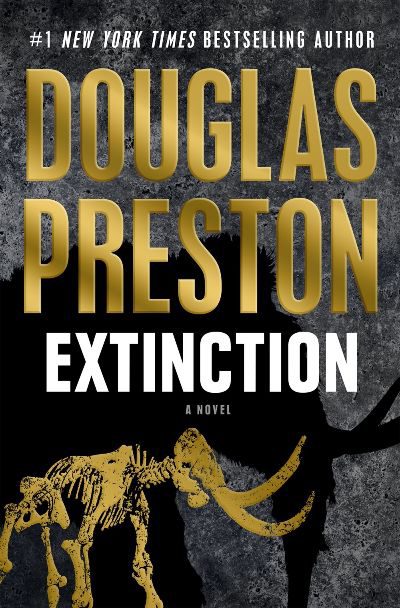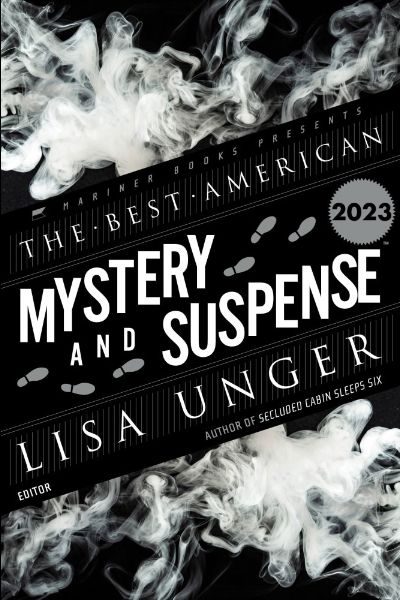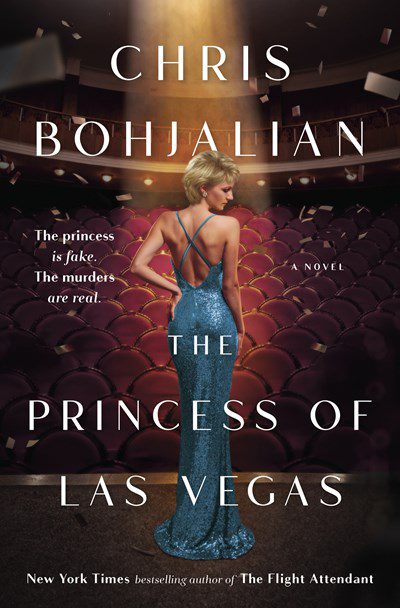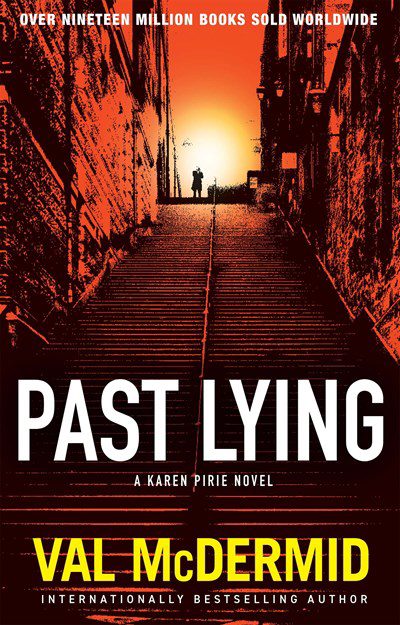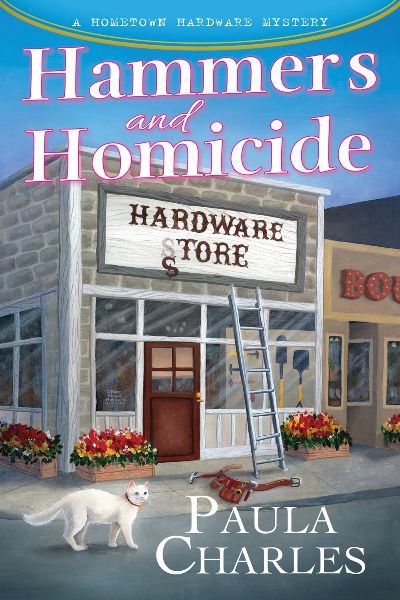Lennon, who has always played with a range of genres in his literary fiction (Broken River, Familiar, Mailman) now dips his pen into more commercial waters with the same inventive, adventurous flair. His new thriller, first in a series, revolves around twins (fraternal, not identical) Jane and Lila Pool. Thirty-five-year-old Jane leads a quiet suburban life in upstate New York, working in a dead-end administrative job at the local college, checking on her absent-minded professor father, and trying to parent adolescent Chloe despite the obnoxious interference of her disapproving mother-in-law. But her comfortable, if boring and unsatisfying, existence is turned upside down when she receives an encrypted email in the guise of spam from her long-estranged sibling. Lila has found their mother, who abandoned the girls 20 years ago, and she wants Jane to come with her to track and confront the wayward Anabel, who may or may not be a CIA agent-turned-drug-queen-pin. As the sisters embark on a whirlwind journey that eventually takes them down to Central America, alternating chapters recount the twins’ lonely, isolated childhood and teenage years as they spy on their distant and remote mother, savoring the few moments of kindness she shows them (“the marvelous, elusive feeling of their mother’s attention”), until Anabel’s final disappearance and an unexpected act of violence propel the girls on a traumatic road trip of escalating bad decisions. Along the way, readers discover who the true hard girl is. Mixing elements of a chase novel with an espionage thriller, this is also a touching story of sisterhood and motherhood in all their complications. Despite a muddled climax, Lennon’s well-written mashup of Where’d You Go, Bernadette and Thelma and Louise, but with a happier ending, will appeal to his fans and attract new readers.
Mystery & Detective
Very British, very country, and a whole lot of fun. Back in 1965, when she was 17, Frances was told by a fortune teller that her future “contains dry bones. Your slow demise begins when you hold the queen in the palm of one hand. Beware the bird…But daughters are the key to justice.” While most teens would shrug it off, Frances became obsessed with the prediction, and devoted much of her life to warding off the prophecy. Jump to today—the story flips back and forth—and meet 25-year-old Annie, an aspiring mystery writer and Frances’s great niece. She’s been summoned to the village of Castle Knoll for a meeting with Great Aunt Frances and a discussion about “the responsibilities that will come with being sole benefactor of her estate and assets.” So off Annie heads to Castle Knoll, meets up with a motley crew of relatives, and quickly manages to arm herself with Great Aunt Frances’s extensive diaries that she discovers in the library. This novel is marvelously well-balanced, humorous, and lighthearted while at the same time dark and macabre, with two great characters—Frances and Annie—who share the narrative from opposite ends. Fans of Anthony Horowitz and Richard Osman will find much to enjoy here
Krystle, Meredith, Justine, and Camille are thrown together when their law-firm owning husbands, and in the case of Meredith, her girlfriend, are killed in a plane crash. The wives already knew and hated one another; the lone female partner in the firm was in the closet (it’s 1985), but is now firmly out, and Meredith joins in the animosity and puzzlement that’s freely flowing. Why were the partners on a plane back to Providence, Rhode Island from New York City, when they were supposed to be working in Providence that day? The reasons slowly become clear as the women are targeted by the town’s mafia for money that the deceased owed. Just when that danger wraps up, a twist hits the widows and readers as another…and another…perilous situation bears down on them. This book began life as an Audible original and its backbiting humor mixed with love and loathing makes it easy to see why it was such a hit and was brought to print. The authors’ note (there’s also a reading-group guide) explains that ‘90s humor-laden novels such as Married to the Mob and The First Wives Club provided inspiration; grab Young Rich Widows for some nostalgia, but it’s also just a fun romp for any thriller lover.
Erebus is a resort for the extremely wealthy, and those who visit the sprawling grounds in the heart of the Colorado Rockies get to experience Earth’s distant past. Using cutting-edge technology, scientists have been able to de-extinct mammals like woolly mammoths and plant life from the Pleistocene era. A young couple pays for a camping trip in the sprawling complex and is kidnapped and killed by what appears to be a group of ruthless hunters. Colorado Bureau of Investigation Agent Frances Cash and county sheriff James Colcord lead the investigation. As the mystery creates national headlines, Cash and Colcord meet resistance from both the team at the resort and their own supervisors. What happened to the couple is only the beginning, and the shocking truth will threaten lives and the history books. Preston creates a Michael Crichton level of thought-provoking science and thrilling intrigue while avoiding writing a Jurassic Park clone. Extinction goes beyond the simple question of whether man should play God, and with a terrific cast of characters, Preston has a guaranteed bestseller.
It wasn’t until I began reviewing for firstCLUE that I read mystery anthologies. Now I’m a firm believer that everyone needs an anthology such as this one on their bedside table. The many stories collected here provide the perfect opportunity to relax, unwind, and travel near and far. As Unger writes in the introduction: “…this form [short fiction] has a special kind of magic, the ability to transport you quickly, intensely, to capture character, time, place, and story with immediacy and deliver it all with a punch.” And where our expectation of crime novels is that everything will be resolved in the end, short stories often finish more enigmatically, giving readers something to ruminate about. Ashley-Ruth M. Bernier, for example, transports us, in “Ripen,” to the Virgin Islands, where a politician’s arrogance leads to his dramatic downfall. A. J. Jacono’s “When We Remember Zion” tells the intensely chilling tale of a mentally ill abductor who delivers his hostage’s baby. We accompany an older veteran—now a professional criminal—who tries to escape from a botched job by returning to his childhood cabin in James A. Hearn’s “Home is the Hunter.” “New York Blues Redux,” by William Boyle, depicts a Brooklyn dive bar that becomes the setting for a night of tragedy. Congratulations to editors Unger and Cha for producing a volume as rich in diversity as it is compelling in its narratives.
Though there’s a year between them, sisters Crissy and Betsy Dowling are so alike they could be twins. And they don’t only resemble each other, they also look very like one Diana Spencer, the late, lamented Princess of Wales. The resemblance is so strong that Crissy performs as Di in a long-running Las Vegas residency. The casino that hosts the emotional cabaret, the Buckingham Palace, or BP, has seen better days, as has Crissy’s relationship with her lookalike sister. Crissy claims that Betsy killed their mother, the circumstances around that a mystery for most of the book. But that doesn’t stop Betsy from re-entering her sister’s life by leaving her social worker job for her new boyfriend’s cryptocurrency firm that’s setting up shop in Vegas. When the owner of the BP is found dead, and Crissy doesn’t believe the police’s finding that it’s a suicide, it starts a chain of subterfuge and violence that makes the sort-of-royals wish that what happens in Vegas didn’t involve them. Bohjalian has intriguingly veered into a much more noir path than his usual, with the darkness complimenting his typical tight plotting and absorbing family drama. This is one for fans of campy fare mixed with family shenanigans and of Elle Cosimano’s Finlay Donovan.
It’s April 2020, the third week of a pandemic lockdown in an eerily quiet and empty Edinburgh. Detective Chief Inspector Karen Pirie of Police Scotland’s Historic Cases Unit has hunkered down with Detective Sergeant Daisy Mortimer in a “quarantine bubble” in her boyfriend Hamish’s spacious New Town apartment while he isolates up in the Highlands. There are no active cold cases to occupy the two officers, and Karen is languishing while longing for something meaningful to investigate. She fights her restlessness with her daily one-hour walks, the maximum allowed under tight restrictions. But when DC Jason Murray receives a call from a contact at the National Library about an unfinished manuscript in the archives of a recently deceased crime novelist, the team may have stumbled upon a connection to the cold case of a young woman who disappeared a year earlier. But how do they investigate a crime while trying to stay within COVID protocols? A determined Karen finds herself “making mincemeat” of the regulations, but as she tells a colleague, “I have to be out on the streets doing what I do. Because I want the world to still be a decent place when we come out on the other side.” In her seventh atmospheric series thriller, McDermid skillfully combines a twisty plot of murder and vengeance with the personal dramas of her detectives, set against the dramatic backdrop of a global pandemic. By the novel’s end, no one has been left unscathed by this traumatic time. In her acknowledgments, McDermid notes that she penned this novel only in 2023, needing the distance of time to write about those frightening early days. I suspect her book is the first of many crime novels that will explore the impact of COVID on the human psyche.
It’s winter when a fire destroys a farmhouse in rural Sweden, burning it to the ground. With the parents out for the night, the only victim was the twenty-something daughter of the house. But she wasn’t killed by the fire; her autopsy reveals that she was murdered by blows to the head. Who would have wanted to kill Lovisa, who was loved by everyone? While the murderer is quickly identified, tried, and jailed, this story continues to expand in multiple directions, exploring the impact of a murder on a community, the families, even Edvard, the perpetrator. It’s also a coming-of-age novel as we follow Edvard’s nephew, who grows up in the shadow of his uncle’s acts, worrying that he too has a propensity for violence. But at its heart, this is the tale of Vidar Jörgensson, a young police officer who was one of the first officers at the fire and helped to solve it, but then spent years ruminating over the case. This is no less than a brilliant crime novel. Carlsson combines his deep knowledge of criminal motivations and trauma—he has a doctorate in criminology—with rich, compelling storytelling. Fans of the TV series Broadchurch and the works of Ann Cleeves will enjoy the deep community focus. Sure to be one of the big books of early 2024.
Dawna Carpenter runs a hardware store in downtown Pine Bluff, Oregon. She struggles to keep it going, especially after the death of her beloved husband, Bob. The building shares space with a boutique, and the woman who runs Lipstick and Lace is a real piece of work. A real-estate developer in town has bold plans to open a luxurious hotel, but when he’s found dead in the hardware store’s bathroom, Dawna’s life gets turned upside down even more than she thought possible. The quirky cast of characters, the slowly building mystery, and the light-hearted tone make Hammers and Homicide a terrific debut. Charles also does an outstanding job of addressing how people deal with the grief of losing a loved one, without being overly depressing. Readers will be fixing to read more mysteries of this series and Paula Charles.
Jhonni Laurent is the first female sheriff in her rural Indiana town of Field’s Crossing and its surrounding quad-county area. She tries to be more community oriented than her predecessor, showing up at the first day of school to greet parents and students, for example, and avoiding all efforts at improper influence. Her work is a hit with locals but isn’t appreciated by a colleague whom she beat in the race for the job. Or his nasty buddy at the local newspaper, who’s doing all he can to get Jhonni out of the political picture. She doesn’t need the first local murder in…ever?…to happen on her watch, but when teenager Stephanie Gattison is found frozen in a snowbank, it looks like foul play. The body is barely thawed before another victim is found, this time an ice fisher who’s found frozen to the lake surface. Fans of Emily Littlejohn’s Detective Gemma Monroe and Tony and Anne Hillerman’s police officer Bernadette Manualito will enjoy making the acquaintance of this steadfast, likable, and capable sheriff, while those who love a small-town atmosphere, with its closeness as well as its backbiting, will feel right at home here. A debut author to watch.




